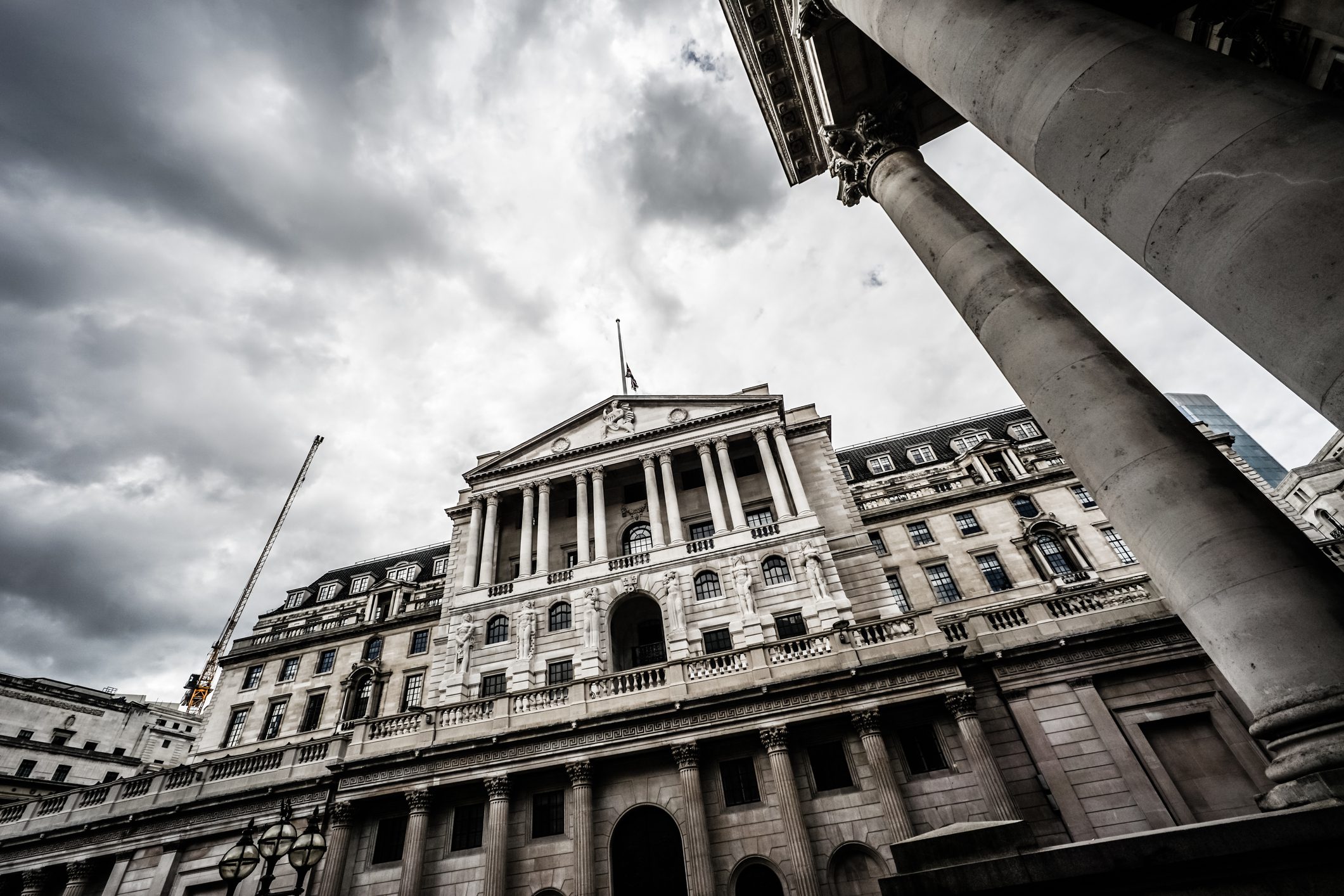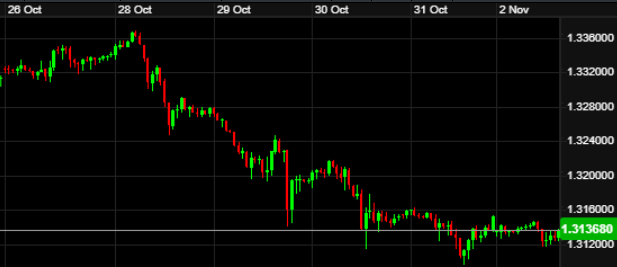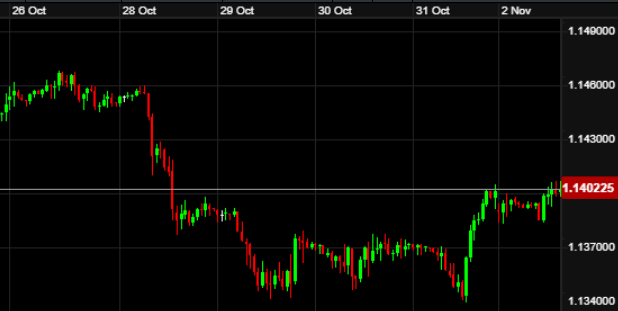ACM Update 03-11-25

Sterling-Euro had a Halloween horror-show last week, bouncing off a 30-month low on Friday lunchtime. Financial markets and the British public have growing concerns about this month’s Budget, whilst bond markets falling also had a detrimental effect on the pound.
In the US, the Fed admitted to “flying blind” with their Wednesday rate cut, as US data releases remain sparse amid the shutdown. The ECB meeting also delivered an expected outcome with interest rates held.
This week brings the Bank of England’s turn to determine monetary policy. Whilst in the US, the latest round of Non-Farm Payrolls data may not even make an appearance.
The Federal Reserve made it two cuts in a row last week, despite a distinct lack of economic data at their disposal. Going off what they had, the committee reached a majority vote to cut rates again by 0.25%.
Two voting members went against the consensus though, for opposing reasons. Trump mole, Stephen Miran, made a vote for a larger 0.5% cut, whilst Jeffrey Schmid preferred to make no change at all to interest rates. As it was though, the Fed pressed ahead with the 0.25% cut, which had been widely telegraphed and expected by markets.
The path going forwards seems less clear though. Prior to the meeting, financial markets had priced in over a 90% chance of a December cut, but Jerome Powell poured water on the matter in his press conference. The Fed Chair stated that such a cut was “not a foregone conclusion, far from it” when he spoke. This led to some Dollar strength midweek.
The lack of economic data published due to the shutdown, produced the excellent analogy from Powell, of “What do you do if you’re driving in the fog? You slow down”.
As the shutdown rumbles on, closing in on the 2018-2019 record of 35 days, the little US data emerging isn’t making for great reading. Mounting US Government debt as a result of Trump’s “big, beautiful bill” remains alarming, raising concerns that the US economy is heading for a major slowdown.
US Consumer Confidence figures were published, but these fell for the third straight month in October. This is hardly surprising given a weaker jobs market and slowing economy, as well as tariff uncertainty. On which note, this week the Supreme Court will hear the arguments from both sides and begin the process of making a decision as to whether the president’s tariffs are indeed legal. A decision may take months however.
Overall, GBP-USD moved downwards last week, for reasons more to do with the Pound than the Dollar. The pair hit a six-month low, which can be seen in the chart below:

Sterling endured a torrid week to close October, as fiscal uncertainty continued to weigh heavily. The upcoming budget remains a negative factor, as the country awaits the latest from the Chancellor. Rachel Reeves is expected to have to raise taxes, as she attempts to reverse the ever-expanding shortfall in UK finances.
In squeezing the economy through higher taxes however, economists expect such a strategy to move inflation lower, thus allowing the Bank of England to cut interest rates faster. This in turn saw a drop-off in UK bond yields last week and thus a further weakening to GBP.
As a result, the Bank of England are expected to be in wait and see mode at this week’s policy meeting. Their next action will be determined by Reeves’ Budget, thus no action just three weeks before seems logical. A Reuters poll last week suggested that 87% of economists surveyed expect rates to be held on Thursday lunchtime.
Rachel Reeves kept herself in the headlines in other ways last week. The Chancellor declared her intention to “defy gloomy growth forecasts”, blaming the former Conservative Government’s performance since the 2008 financial crisis and Brexit, in the process. She then grabbed the front pages for not obtaining the relevant permit for her residential home, when she rented it out after moving into 11 Downing Street in 2024.
Meanwhile her boss, Sir Keir Starmer, danced around questions on potential tax hikes in Wednesday’s PMQs. A manifesto U-turn in the 26th November Budget looks increasingly likely, despite his silence.
In Europe, the ECB also held their latest meeting last week. The gathering was the one meeting of the year that takes place outside their Frankfurt HQ, this time hosted by the Bank of Italy in Florence. The outcome was as markets had expected (forecasts were a strong 99%), in no change to current policy.
The following Christine Lagarde press conference was essentially a copy-paste from the previous meeting, although admittedly she was wearing a different scarf. The ECB continue to give themselves a firm pat on the back over their control of inflation, where they described their inflation outlook as broadly unchanged.
Lagarde continued that the committee will stick with their data dependent, meeting by meeting approach. This will remain around an assessment of the inflation outlook and other data. As before, they are not committing to any sort of pre-set rate path.
Growth remains the main concern in the bloc, which the latest Eurostat figures confirmed as a pedestrian 0.2% in Q3. The French and German figures on the weak side, balanced out the stronger Spanish and Portuguese numbers. The initial CPI Flash Estimate for October meanwhile saw the inflation metric hit 2.1%. However September’s release saw the same, before being revised back down to 2.0%.
The poor GBP performance was the major driver on the pair last week as Sterling-Euro hit a low going back to April 2023. Movements can be seen in the chart below:

The week ahead:
Monday – EU/UK/CAN/US Manufacturing PMIs (08:15-15:00), Fed Daly (17:00) & Fed Cook (19:00) speeches
Tuesday – Reserve Bank of Australia rate announcement (03:30), ECB Lagarde speech (07:40), Fed Bowman speech (11:35), BoE Breeden speech (13:00), JOLTS Job Openings (Tentative), ECB Nagel speech (17:00)
Wednesday – EU/UK/CAN/US Services PMIs (08:15-15:00), ADP Non-Farm Payrolls (13:15), BoE Breeden speech (16:10)
Thursday – Bank of England rate announcement (12:00), US Unemployment Claims (Tentative), ECB Nagel speech (14:00), Fed Barr, Williams, Hammack, Waller, Paulson, Musalem speeches (16:00-22:30)
Friday – ECB Nagel speech (12:00), BoE Pill speech (12:15), US Non-Farm Payrolls, Unemployment & Core PCE inflation (Tentative)
With the Federal Reserve and European Central Bank now behind us, this week sees the turn of the Bank of England to reveal their latest policy decision. As already mentioned, Thursday lunchtime is highly likely to see the Bank play wait and see, prior to the budget at the end of the month. An 8-1 vote split for the hold is currently projected. There are a scattering of MPC member speeches throughout the week, which could offer more insight.
US data remains absent in light of the shutdown. We now find ourselves just a day shy of the previous longest shutdown in 2018/2019, which formed a part of Trump’s first Presidency. Usually speaking the first week of the month contains important US releases relating to the jobs market, but these are likely to remain unpublished unless a deal is reached in the next few days.
In the Eurozone, the pursuit of economic growth remains the major focus. With interest rates looking likely to be at their current levels for a while and inflation flattening out, the ECB can afford to go all in on growth. Of the three majors, the Euro is largely being driven by events in the UK and US at present.
Given we saw another week of 2% worth of FX movement last week for GBP, securing FX exposures remains an important element of budgeting. Strategies such as forward contracts have been beneficial for clients of late, looking to fix costs over the coming months.
For those with funds available to convert now, the recent peaks for EUR-GBP and USD-GBP are presenting good opportunities for the use of limit orders. This involves an automated order once a certain rate is hit. Do reach out to the team for more information on either of the above options.
Have a great week.